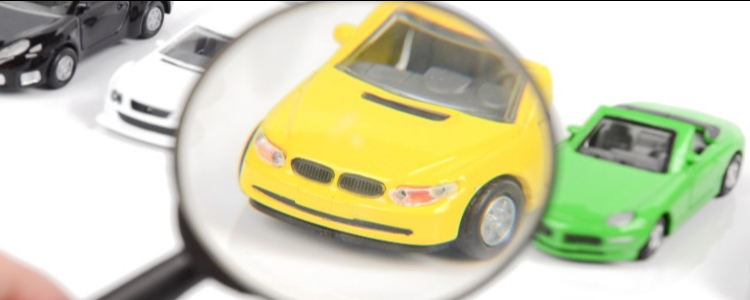Car prices aren't what they used to be. As we've seen over the past few years chip shortages and supply chain issues ravaged much of the U.S. new car inventory, making both new and used vehicles harder to find and driving up prices.
As we roll into 2024, some of these issues are being alleviated, though inventory is far from what it used to be. Will we see a time when car prices reach pre-pandemic levels? Let's take a look.
Why Are Car Prices So High?
Car prices are high right now due to many factors, including supply chain issues, new inventory shortages, raw materials shortages, the war in Ukraine, inflation, and dealer markups.
Way back in 2021, experts predicted the vehicle shortage that's putting the squeeze on prices would not let up until well into 2022 or even early 2023, and as we know, that was definitely the case.
Prices are still soaring over pre-pandemic levels, though they are starting to drop in some segments of the market, like used cars, according to an analysis by iSeeCars. They find that we're in what they're calling a "Pandemic hangover" when it comes to the used car market, since the production of vehicles was so low in the past three years, there are fewer used cars on the market from those years.
This, coupled with rising prices, is forcing used car shoppers to look for vehicles that are around six years old on average, instead of shopping for cars that are just two to three years old.
When Will New Car Prices Drop?
There's no set indication that new car prices will become much cheaper this year or next. So far, prices in 2023 have barely declined. According to a report earlier this year from JP Morgan, new car prices were only estimated to fall around 5% this year as inventories began to build.
According to Thomas King, president of data and analytics at JD Power, “As sales volumes improve, the average new-vehicle retail transaction price is declining very modestly, trending down $94 or 0.2% from September 2022 to $45,516. However, even with the decline in average transaction prices, consumers are on track to spend nearly $46.8 billion on new vehicles this month—the highest on record for the month of September and 10.7% higher than September 2022.”
Average car prices were the highest they've been in September of 2022, with the average consumer spending $45,665 for a new car. That's $3,465 higher than consumers paid in 2021, according to JD Power.
According to the Experian State of the Automotive Finance Market report for the second quarter of 2023, the average new car loan amount was also up just 0.02% in Q2 2023 over the second quarter of 2022, with the average loan amount being $40,657 in mid-2023. However, the average new-car loan rate increased to 6.63% compared to 4.6% in the same quarter a year prior, leading to higher average auto loan costs. These higher loan costs include higher average interest rates, as inflation and federal rate hikes have taken a toll on the market.
In the second quarter of 2023, the average APR on a new car loan was 6.63%, compared to just 4.60% in 2022. This means that on average, loans are currently around 2.03% more expensive than they were last year.
The silver lining here is that you can find better prices than last year, as many automakers begin to offer incentives again, especially for leasing. There are many more discounts than we saw last year – both in the form of bonus cash and APR deals – especially from automakers that are beginning to build a solid inventory again after the struggles of the pandemic and supply chain issues.
However, the base prices of new cars aren't expected to dip much in the upcoming year. As we move toward more EV products and more standard features on all vehicles, prices are rising to match ever-mounting costs.
When Will Used Car Prices Drop?
According to iSeeCars, used car prices have begun to come down from their peak. Prices first fell slightly – 2% – in November of 2022, then another 3% in December leading into 2023. However, as we roll into 2024, models aren't expected to decline in price very much.
As we move into the end of 2023, some automakers are dealing with a shortage of vehicles from the past three years, which coupled with rising prices has left used car shoppers vying for a share of much older cars than was the norm. Instead of shopping for vehicles that are around one to three years old, used car shoppers are now having to search for vehicles that are around six to eight years old.
In a recent study, iSeeCars analyzed over 21 million used cars that were sold between 2019 and 2023 and found the average age of a used car sold increased to 6.1 years old from 4.8 years old. Additionally, the average price of used cars increased 33%, to $27,133 from $20,398.
“The impact of restricted new car production during the pandemic has come home to roost in the used car market,” said Brauer. “With 1- to 3-year-old used car supply down between 20 and 45 percent, buyers that previously shopped for late model year used cars now have to spend much more or consider much older vehicles.”
Some vehicles, namely EVs have dropped prices over the course of this year. This charge was led by Tesla, which as seen over a 17% price reduction on the Model 3 this year. But this trend isn't hitting the wider market.
As prices continue to see a downward trend on some used cars, it's important to remember that many factors go into the price of a car. It's worth it to do your research to find the cheapest vehicle that meets your needs in your area, because prices are up on other models that were in short supply for the past few years..
Another factor impacting the price of used cars is that loan rates are getting more expensive. In the second Quarter of 2023, the average used car loan rate was 11.38%, up from 8.84% in 2022.
Tips For Getting The Cheapest Car Loan You Can

With auto prices high, it may take a little work to get the deal you're looking for. Getting the cheapest car you can doesn't mean getting something for $5,000 or less in today's market, but getting a vehicle you can afford is still important.
In order to do this, here are three tips you can use:
1. Stick to your budget
You don't want to go broke trying to pay for your car loan, so a good rule of thumb is to make sure your payment takes up as little of your available budget as possible. We recommend no more than 20% of your income goes to your car loan, but the lower the percentage the better.
2. Choose the shortest loan term you can
When you're a borrower with lower credit, you're typically assigned higher interest rates, so the longer you take to pay off your loan, the more you end up paying.
3. Bring a down payment
A down payment is one of the best tools you have when it comes to getting an affordable auto loan. The more you pay upfront, the less you have to finance and the less you pay in interest charges in the long run.
Getting a Good Deal as a Bad Credit Borrower
If you're a bad credit borrower, you can wait it out and improve your credit while you wait. But if you can't wait, working with the right lender is key. As a bad credit borrower, your options are a bit more limited, but far from gone.
You can look for pre-approval from a direct lender, such as your bank or credit union. You can also try your hand at working through the captive lender of an automaker -- some, like Kia, Ford, and Hyundai are known for working for many types of borrowers.
You may have your most luck by working with a special finance dealership or BHPH lot though, especially with credit issues.
It pays to know the ropes before you head out to the dealerships when you're looking for the cheapest deal on a car loan. Knowing which dealers work with bad credit lenders is also key. You have options when it comes to getting a car loan, but not all lenders work with all credit situations.
Those that do are called subprime lenders and they look at more than just your credit score to qualify you for an auto loan.















